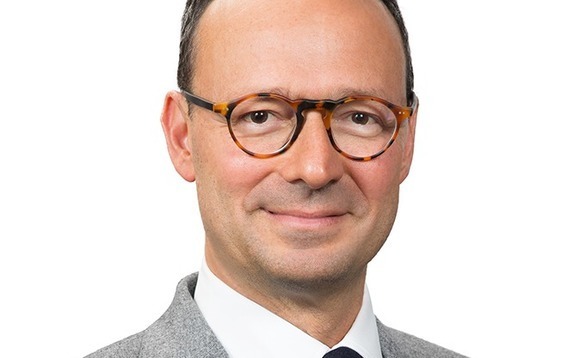
Q&A: BPEA EQT's Jean Eric Salata

Jean Eric Salata, head of BPEA EQT and chair of EQT Asia, on the benefits of diversification, why Asia’s limited reliance on leverage could lead to better relative performance, and being creative with liquidity
Q: How do you feel about the market right now?
A: It's a complicated environment with a lot more headwinds than 18-24 months ago when interest rates were zero and everything was booming. This is not the first business cycle we have been through as a firm – we've been in business for 26 years and we are on our eighth fund. Looking back at some of the mistakes we made in prior cycles, one of the biggest was not taking enough money off the table during the good times. We got on the front foot and were very proactive in generating liquidity for our investors in 2020 and 2021. Even in the last 12 months, we have distributed about USD 5.5bn. We have also been measured in our investment pace. We started raising Fund VIII in early 2022 and we only made two investments that year, or about 15% of the fund. I don't know when things are going to normalise. We are paying a lot of attention to interest rates – they have led to a different valuation environment, for entry and exit multiples – but we are not playing defence because we've been prudent in our portfolio management. We find attractive investment opportunities around the region. In this kind of environment, it's high-quality assets that come to market. Assets that are not extremely attractive or extremely well positioned are having difficulty being sold or being taken public, so they are being held for longer. However, our approach is to be diversified, in terms of vintage and geography. We are also being thematic – focusing on sectors that demonstrate structural growth and are not cyclical.
Q: Have there been deals in Asia that you wouldn't have attempted prior to the EQT merger?
A: I think the best example would be VetPartners in Australia. We hadn't invested in veterinary clinics before, but EQT has done a lot in that area – not only clinics but also veterinary pharmaceuticals. We had been tracking the asset for a few years, and when the situation became live, we activated the entire EQT playbook, including deal team members in Europe and the network of industrial advisors. Several people in the Asia deal team came from the EQT side. It helped us build conviction as an investment committee here in Asia and it also gave us credibility with the vendor. When buying businesses like these, there are a lot of people issues. The identity and credibility of the buyer make a difference to the vendor because they want to make sure things go smoothly with the doctors and vets.
Q: In Fund VIII to date, there's been some Australia, a lot of India, some cross-border…
A: As certain markets have become less attractive and others become more attractive, we shift our attention and resources accordingly. Asia is large and with the kind of dislocation we're seeing right now, it's important to be able to pivot quickly when we see opportunities. India is a big part of our Fund VIII strategy. There have been seven investments so far, four of them in India. Two are IT services companies that are more export-oriented [IGT Solutions, Sagility]; two are domestic in focus [HDFC Credila, India IVF]. IMG Academy is a global business, headquartered in the US, but with our Nord Anglia Education platform, we see huge demand for rolling out sports camps and creating a franchise in Asia. Vistra-Tricor is Hong Kong-headquartered, but it is global in nature, focusing on fund administration and corporate services. We are less active in China, given some of the uncertainties there, but we continue to look at it. There will be some great investment opportunities in China in the medium to long term, so we want to stay connected. It's really a case of timing and understanding the shifting landscape. We look at everything in our pipeline, compare the risk-return profiles and opportunity sets, and right now we are finding more interesting things in other geographies.
Q: How does cost of financing come into it?
A: If you look at India, interest rates have been elevated forever – they've gone up a bit since the Fed started hiking rates, but not much. And our strategy in India has never been based on financial leverage; it has never been based on having a low-rate environment driving equity markets. It's all about growth. India IVF benefits from more families wanting to have children and going through IVF procedures; this is a structural growth trend driven by the rise of the middle class. India IVF is also a 100% equity deal. We can underwrite to our target returns simply through growth and value creation. HDFC Credila is the same. It's a financial services company, so there is embedded leverage, but it's a 100% equity deal. More than half our deals have leverage, but we will go 100% equity in India from time to time.
Q: Are you using less leverage in Asia buyouts more broadly?
A: That's true of the entire industry. There are deals where you might have taken 5.5x or 6x leverage in the past, but now you take 4x. That just means more of the return must come from growth or margin expansion, or you enter at a lower price to make the math work. What we haven't done – and I don't think you'll see much of this in Asia – is lower our target returns when underwriting deals. If anything, historically, we have been at a disadvantage because returns coming out of developed markets have benefited a lot more than us from rising markets and declining interest rates. We have seen some rising markets, but generally they've been reasonably flat, and the rate environment has been more stable. As we go into the next phase, we will continue to make money the way we always have, by investing in growth and driving value creation. The US markets will have to adapt to a new reality.
Q: What does this mean for the performance of Asian private equity relative to US markets? Many LPs, when giving their reasons for scaling back commitments to the region, cite an unfavourable risk-return…
A: I do believe there has been a structural shift in investing in the US where you have higher rates and more challenging market conditions. When it comes to underwriting for growth, value creation, and margin expansion, I think Asia stacks up well. It should be able to outperform. Another reason Asia is interesting is that, on a relative basis, there is less competition. The amount of capital being raised relative to the size of the market opportunity is becoming more concentrated. We see a smaller number of players competing for assets. On top of that, there are various interesting local dynamics. The Japanese market is characterised by undermanaged and inefficient companies, especially public companies that don't trade at great valuations. The stock exchange has said that companies trading below book value – and there are over 1,000 of them – but must take action to rectify this. At the same time, there are activist investors agitating for change. It all contributes to more deal flow. Liquidity in Asia is different as well. We have seen tremendous liquidity out of India, for example.
Q: Where have those USD 5.5bn in distributions come from?
A: Coforge was a USD 1bn trade in the Indian stock market. Go back 5-10 years, there's no way that would have happened. We did it in one day, at a 3% discount. Geographically, India accounts for about half our exits. The others have been spread around the region – we did an IPO in Japan, we did the Vistra-Tricor deal, we've sold companies to other private equity firms.
Q: Vistra-Tricor was a USD 6.5bn cross-fund deal: Tricor, a Fund VIII company, acquired Vistra, which was held across Funds V and VI. Was this always a likely outcome?
A: They are similar businesses but with different footprints. There are revenue synergies, which are more in the future and harder to predict, and there are cost synergies, which you can calculate precisely. It is like a traditional roll-up strategy. We were able to change the return profile of the assets quite dramatically and that enabled us to really drive the industrial logic of why it made sense. In addition to putting in money from our own fund, we attracted new investors who helped set the price. Some existing investors doubled down or rolled over.
Q: Is this an example of investors becoming more creative around liquidity?
A: We must look at all the tools in our toolkit and those include cross-fund deals and continuation vehicles. EQT is looking into the possibility of private IPOs. Public IPOs aren't functioning well, largely because passive index funds now make up more than half of stock market capitalisation and they don't buy IPOs. Most of the buyers are now hedge funds and they are very different to traditional long-only investors. A private IPO would involve allowing investors to buy into assets you own. You create mechanisms around pricing and trading, and it becomes a halfway house between a true IPO and bringing in a couple of minority investors. The question is who would provide the governance. There are situations in real estate where people continue to manage assets after they are sold to a group of LPs. You can pay a broker to do that, or the GP can do it. We've seen it happen with REITs. Can we bring some of that thinking into the private equity world?
Q: Are you also thinking about long-dated or permanent capital structures?
A: It's an interesting idea, but these things are relatively new to investors, so not a lot of them have allocations or buckets for these pools of capital. But the entire private equity industry is starting to segment: different holding periods, different costs of capital, long-dated funds, lower return capital for steady businesses that can compound more over time. Clients will want fewer, larger relationships and more strategic relationships – and we are always looking at how we can expand our relationships with them to offer a full suite of solutions.
Q: Is there a risk of spreading yourself too thin?
A: Yes, if you don't manage it properly. There's also a flip side. You can get a lot more out of your platform when you aren't constrained with a single strategy. When you talk to a company, it becomes a more interesting discussion because you can do multiple things. It's great internally as well. It creates more opportunities; it creates more energy. But scale really matters. With scale comes a lot more flexibility in how you run the business and what sort of initiatives you invest in. We just launched EQT Nexus, a private client product. There are a lot of entry barriers around cost – it requires a huge sales effort with more than 100 people – regulation, and capital. And then there are the platforms you work with. Private banks want to carry branded products that people recognise or have some broad appeal; they aren't going to carry a bunch of niche funds because it's complicated to manage that. So, the scale aspect really matters when expanding. Beyond that, it's all about returns. If we aren't delivering returns, we don't have a business. During the boom times, everyone was making money, and it was all good. When markets get tough, like they are now, returns are truly differentiating. Groups that consistently generate returns are raising capital. Those that do not are finding it difficult.
Q: How significant is EQT Nexus – and the private wealth community – from a fundraising perspective?
A: That part of the market is growing twice as fast as the institutional part. It will probably represent one-third of our industry in the next 10 years, which makes it extremely important and very strategic.
Latest News
Asian GPs slow implementation of ESG policies - survey
Asia-based private equity firms are assigning more dedicated resources to environment, social, and governance (ESG) programmes, but policy changes have slowed in the past 12 months, in part due to concerns raised internally and by LPs, according to a...
Singapore fintech start-up LXA gets $10m seed round
New Enterprise Associates (NEA) has led a USD 10m seed round for Singapore’s LXA, a financial technology start-up launched by a former Asia senior executive at The Blackstone Group.
India's InCred announces $60m round, claims unicorn status
Indian non-bank lender InCred Financial Services said it has received INR 5bn (USD 60m) at a valuation of at least USD 1bn from unnamed investors including “a global private equity fund.”
Insight leads $50m round for Australia's Roller
Insight Partners has led a USD 50m round for Australia’s Roller, a venue management software provider specializing in family fun parks.







